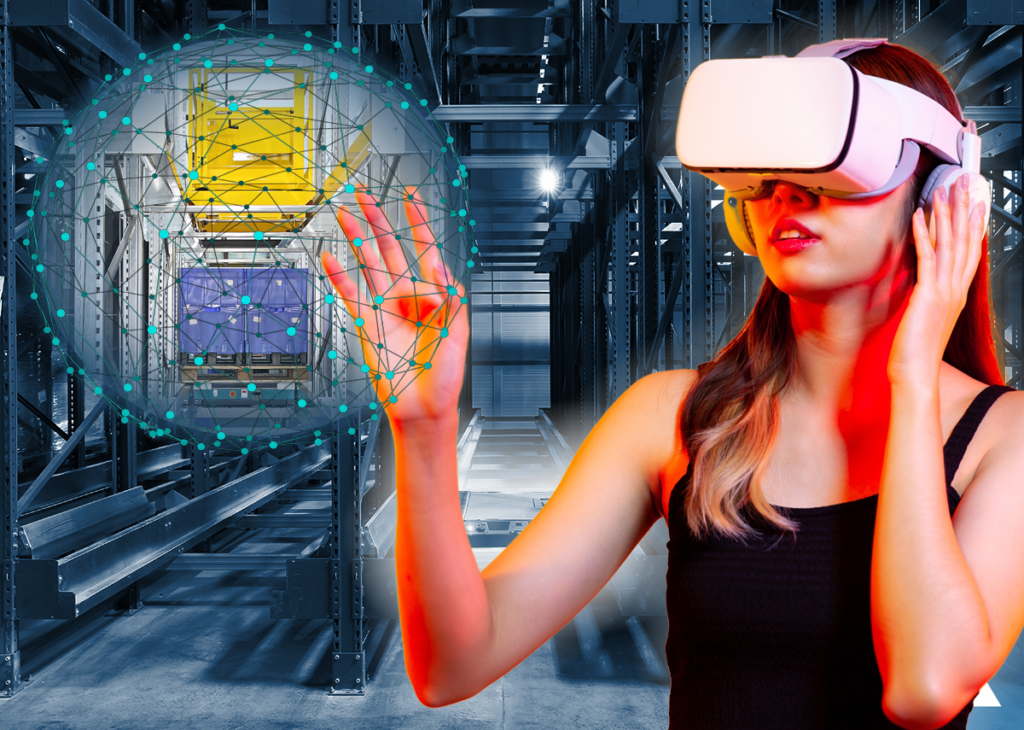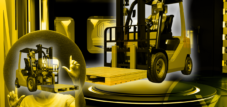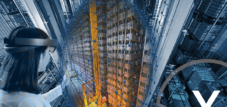Top Ten Vertical & Horizontal AGVs (Automated Guided Vehicles) & Robot Shuttle Systems from Manufacturers and Companies | Metaverse Marketing
Language selection 📢
Published on: July 1, 2023 / update from: July 1, 2023 - Author: Konrad Wolfenstein
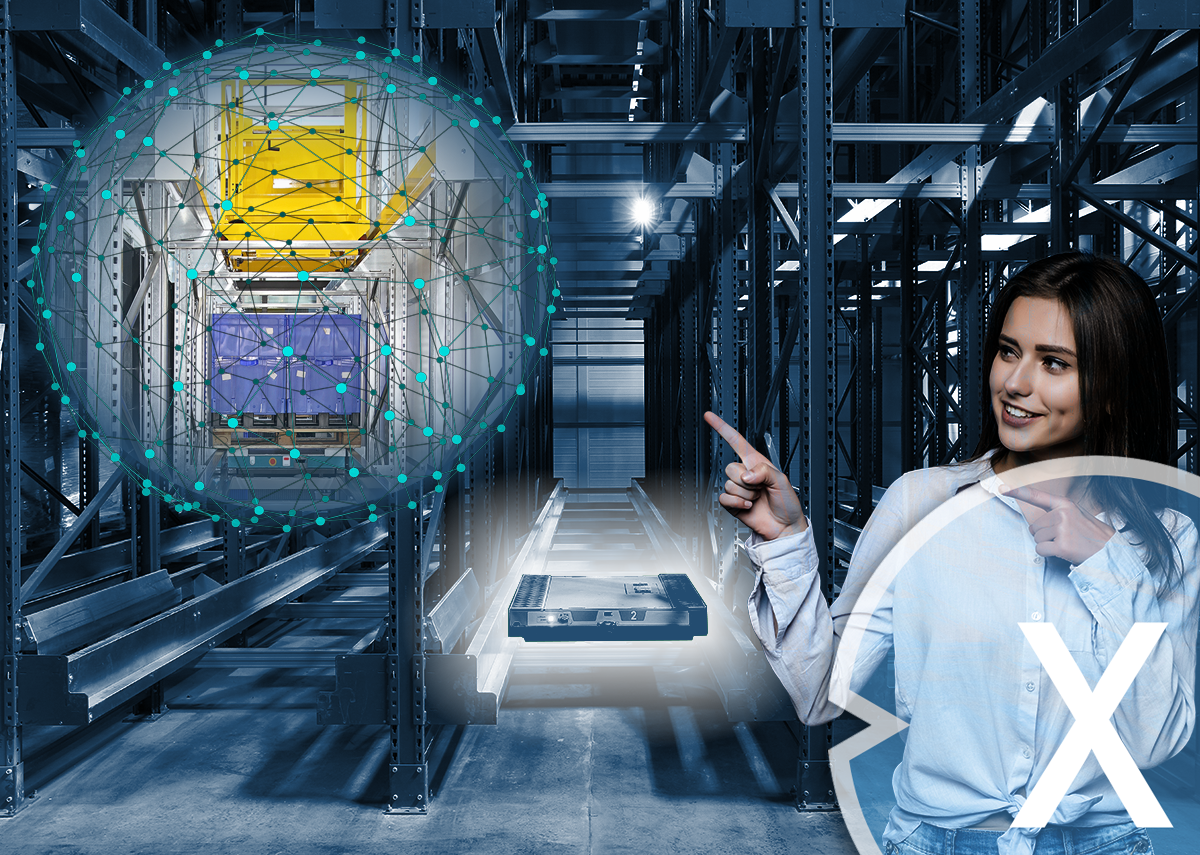
Vertical and Horizontal AGVs (Automated Guided Vehicles) & Robot Shuttle Systems – Image: Xpert.Digital
Vertical and horizontal AGVs (Automated Guided Vehicles) & robot shuttle systems
Vertical and horizontal AGVs (Automated Guided Vehicles) and robot shuttle systems are innovative technologies used in logistics to optimize internal transport and storage of goods. They offer efficiency, precision and automation for logistics processes.
Vertical AGVs and robot shuttle systems
Function and application
Vertical AGVs and robot shuttle systems have been specifically developed for the vertical transport and storage of goods. They can move along vertical tracks or elevators and transport products between different levels of a warehouse. These systems offer space-saving solutions for storing and accessing goods on higher shelf levels.
Automation and navigation
Vertical AGVs and robot shuttle systems are usually autonomous and can control their movements and tasks independently. They use advanced navigation technologies such as laser scanners, cameras or infrared sensors to detect and avoid obstacles. This allows them to operate safely and precisely in a warehouse environment.
Flexibility and scalability
These systems are often modular, meaning they can be customized to meet the specific needs and growth of a business. If necessary, additional AGVs or robot shuttles can be added to increase capacity and ensure flexible scalability.
Storage density and space saving
By allowing vertical movement in warehouses, vertical AGVs and robotic shuttle systems can make optimal use of available space. They allow goods to be stored on higher shelf levels, thereby maximizing storage density. This results in efficient use of storage space and offers companies the opportunity to store a larger number of products in a limited space.
Increased efficiency
The use of vertical AGVs and robotic shuttle systems allows for more efficient material flow control in a warehouse. The automated and precise movement of the shuttles allows goods to be transported quickly and reliably between different storage areas. This leads to shortened transport times and an overall improved efficiency of the warehouse processes.
Horizontal AGVs and robot shuttle systems
Function and application
Horizontal AGVs and robot shuttle systems are designed to improve the internal transport of goods on a horizontal level. They move along horizontal tracks or conveyors and can transport goods from one end of the warehouse to the other. These systems are ideal for transporting products in warehouses over longer distances.
Flexibility and adaptability
Horizontal AGVs and robot shuttle systems offer high flexibility and adaptability to different warehouse environments. They can be equipped with different grippers or pick-up units to transport a variety of types of goods, including boxes, pallets or containers. This makes them versatile and can be tailored to the specific requirements of a company.
Safety and collision avoidance
To ensure safety in a warehouse, horizontal AGVs and robotic shuttle systems are equipped with advanced safety features. They use sensors and cameras to detect obstacles and avoid collisions. This minimizes the risk of accidents and enables safe collaboration with employees.
Integration into warehouse management systems
Horizontal AGVs and robot shuttle systems can be seamlessly integrated into modern warehouse management systems. You communicate with the system and automatically receive orders for the collection and delivery of goods. Through this integration, warehouse processes can be optimized and efficient management of the flow of goods can be achieved.
Scalability and performance
These systems offer high performance and are able to transport large quantities of goods efficiently. As demand increases, additional horizontal AGVs or robotic shuttles can be added to increase capacity and provide a scalable solution.
➡️ Vertical and horizontal AGVs as well as robot shuttle systems are revolutionizing the way goods are transported and stored in logistics. They offer efficiency, space savings, flexibility and automation, resulting in improved productivity and cost optimization. By integrating them into modern warehouse management systems, companies can optimize their logistical processes and gain a competitive advantage.
Top Ten Manufacturers and Companies/Providers for Vertical and Horizontal AGVs (Automated Guided Vehicles)
Daifuku Corporation
Daifuku Corporation, headquartered in Japan, is a global provider of material handling systems and automated solutions for warehouses and factories. The company offers a wide range of AGV systems, including both vertical and horizontal shuttles.
Swisslog AG
Swisslog is an international provider of automated storage and transport systems. They offer both vertical and horizontal AGV solutions and are known for their high precision and reliability.
Dematic GmbH
Dematic is a leading global provider of intralogistics solutions. Their portfolio includes a wide range of AGV systems, including vertical and horizontal shuttles, which can be tailored to customers' individual requirements.
KION Group AG
The KION Group is one of the largest manufacturers of industrial trucks and intralogistics solutions. They offer a variety of AGV systems including both vertical and horizontal shuttles that enable efficient movement of goods.
SSI SCHAEFER AG
SSI SCHÄFER is a global provider of warehousing and logistics solutions. They offer a wide range of AGV systems, including vertical and horizontal shuttles, ensuring optimal use of space and rapid movement of goods.
KUKA AG
KUKA is a leading international provider of robotics and automation systems. They also offer AGV solutions that can handle both vertical and horizontal transportation tasks in warehouse and manufacturing environments.
Grenzbach Maschinenbau GmbH
Grenzbach is a specialist in automated material flow systems and offers AGV solutions for different areas of application. Their vertical and horizontal shuttles are characterized by their precision and reliability.
Jungheinrich AG
Jungheinrich is a well-known manufacturer of industrial trucks and intralogistics solutions. They also offer a wide range of AGV systems, including both vertical and horizontal shuttles, to optimize storage and transportation processes.
EK AUTOMATION GmbH
EK AUTOMATION is a specialist in tailor-made AGV solutions. They offer both vertical and horizontal shuttles tailored to customers' specific requirements.
MLR System GmbH
MLR System is a specialist in automated logistics solutions. They offer a wide range of AGV systems including vertical and horizontal shuttles that enable flexible and efficient movement of goods across various industries.
➡️ These manufacturers are renowned companies in the industry and offer high-quality AGV systems for vertical and horizontal transport of goods in logistics. Their products are characterized by high precision, reliability and flexibility and can be individually adapted to the needs of customers.
Top ten manufacturers and companies/providers for robot shuttle systems
Hello Intralogistics
Servus Intralogistics is an Austrian company that specializes in the development and provision of innovative intralogistics solutions. Your robot shuttle system offers efficient and automated movement of goods in warehouses and distribution centers.
GreyOrange
Greyorange is a global provider of robotics and automation solutions. Your robot shuttle system called “Butler” enables the automated goods movement in warehouses and distribution centers. It offers high flexibility and scalability to meet the specific requirements of customers.
Geek+ Robotics
Geek+ Robotics is a leading manufacturer of autonomous robotics solutions for the logistics industry. Your robot shuttle system supports the efficient transport and storage of goods in various environments. It features high speed, precision and adaptability.
Hikrobot
Hikrobot is a Chinese manufacturer of robotics solutions for logistics and intralogistics. Your robot shuttle system provides efficient and automated movement of goods in warehouses. It is known for its high load capacity and ability to handle various types of goods.
IAM Robotics
IAM Robotics is a company that specializes in mobile robot solutions. Your robot shuttle system called “Swift” enables the efficient and automated transport of goods in camps and distribution centers. It is equipped with advanced navigation and gripping technologies.
Fetch Robotics
Fetch Robotics is a leading provider of autonomous robotics solutions for intralogistics. Your robot shuttle system supports efficient material transport and picking in warehouse environments. It offers a high level of flexibility and can be seamlessly integrated into existing systems.
Magazino
Magazino is a German company that specializes in the development of collaborative robots. Your robot shuttle system called “Toru” enables automated goods transport and storage in warehouses and logistics centers. It is characterized by its high accuracy and security.
Adept Technology
Adept Technology, an Omron Automation company, is a leading provider of robotics and automation solutions. Your robot shuttle system supports efficient material transportation and warehouse management in various industries. It offers high speed and precision.
inVia Robotics
inVia Robotics is a company specializing in robotics solutions for warehouse automation. Your robot shuttle system enables automated goods transport and picking in warehouses and distribution centers. It is known for its flexibility, scalability and ease of use.
Quicktron
Quicktron is a Chinese manufacturer of autonomous robotics solutions for intralogistics. Your robot shuttle system supports the efficient transport of goods and storage in warehouses. It is characterized by its high speed, precision and adaptability.
➡️ These manufacturers are renowned companies in the robotics industry and offer advanced robot shuttle systems for efficient and automated goods movement in logistics. Their solutions are designed to improve efficiency, productivity and accuracy in warehouse environments.
The difference between vertical and horizontal AGVs (Automated Guided Vehicles), robot shuttle systems and Automated Guided Vehicle (AGV)
Automated Guided Vehicles (AGVs), robotic shuttle systems and Automated Guided Vehicles (AGVs) are all advanced technologies for the automated transport of goods in logistics. Although they have similar goals, there are differences in their functions, applications and areas of use.
Vertical AGVs (Automated Guided Vehicles)
Vertical AGVs are specifically designed for the vertical transport of goods in multi-story warehouses. They are able to transport and store goods vertically. These vehicles mostly use a vertical lift system to move goods between different levels. Vertical AGVs are ideal for warehouses with limited space as they can make optimal use of vertical space.
Horizontal AGVs (Automated Guided Vehicles)
Horizontal AGVs are designed for the horizontal transport of goods over longer distances within a warehouse or production facility. They can efficiently transport goods from one place to another without the need for human drivers. Horizontal AGVs are typically equipped with advanced navigation systems that allow them to navigate the warehouse environment safely and precisely. They can transport different types of goods including pallets, containers and boxes.
Robot shuttle systems
Robotic shuttle systems are a type of AGV that offer both horizontal and vertical transportation capabilities. These systems consist of autonomous robots capable of transporting and storing goods. Robotic shuttle systems use advanced technologies such as artificial intelligence, machine learning and image processing to accomplish their tasks. You can make the transport of goods in warehouses and distribution centers more efficient and precise. These systems offer great flexibility as they are able to adapt to different warehouse environments and requirements.
Automated Guided Vehicles (AGV)
Automated Guided Vehicles, or autonomous vehicles with automated controls, are another form of AGV. AGVs are typically driverless vehicles capable of automatically transporting goods and performing specific tasks in warehouses, manufacturing plants and other environments. They can have different shapes, such as: B. Forklift AGVs or platform AGVs. AGVs are equipped with sensors and navigation systems that allow them to detect the environment and navigate safely.
➡️ The main difference between vertical and horizontal AGVs, robot shuttle systems and AGVs lies in their functionality and specific application areas. Vertical AGVs specialize in the vertical transport of goods in multi-story warehouses, while horizontal AGVs cover horizontal transport over longer distances. Robot shuttle systems combine both horizontal and vertical transport functions and offer a high level of flexibility. AGVs are autonomous vehicles that can be used in various environments.
➡️ These advanced technologies are revolutionizing the logistics industry, helping to increase efficiency, reduce costs and improve warehouse automation. They enable precise, fast and safe movement of goods and help optimize storage and production processes. Choosing the right system depends on the specific requirements, the size of the warehouse and the desired functions.
The scope of application of automated guided vehicles (AGVs)
Automated guided vehicles (AGVs) are used in a variety of industries and applications.
Warehouses and distribution centers
AGVs are often used in warehouses and distribution centers to automate the transportation of goods and warehouse management. You can transport goods from shelves to picking stations or shipping areas, saving time and money.
Production facilities
In the manufacturing industry, AGVs are used to transport materials and components between different production lines or work stations. This helps optimize production flow, reduce bottlenecks and improve overall efficiency.
Retail and e-commerce
In retail and e-commerce, AGVs support efficiency in warehouses and shipping centers. You can automate the movement of goods from the warehouse to the sales floor or to the shipping department and enable faster fulfillment of orders.
Hospitals and healthcare
AGVs are also used in hospitals and other medical facilities to automate the transport of medical devices, medications and other materials. This helps improve efficiency, accuracy and patient safety.
Airports and logistics terminals
In areas with high logistics activity such as airports and logistics terminals, AGVs can speed up the transport of goods and increase efficiency. You can transport luggage, cargo or load carriers between different areas of the airport or terminal.
Automotive industry
In the automotive industry, AGVs are used to automate the transport of components, parts and vehicles within production facilities. This enables efficient assembly and just-in-time deliveries.
Food and beverage industry
In the food and beverage industry, AGVs can automate the movement of raw materials, ingredients and finished products. They ensure hygienic and reliable handling of food.
➡️ AGVs offer numerous benefits such as increased efficiency, reduced operating costs, improved safety and accuracy. Therefore, they are used in many industries to optimize logistics and transport processes and increase productivity.
Future technology for sales & marketing of vertical and horizontal AGVs (automated guided vehicles) and robot shuttle systems with Metaverse and XR technologies
The future technology for sales & marketing of vertical and horizontal AGVs (Automated Guided Vehicles) and robot shuttle systems will reach a completely new dimension through the integration of Metaverse and XR technologies. These innovative technologies offer sales and marketing companies the opportunity to present their products and services in a revolutionary way, delight customers and increase their competitiveness.
Virtual product presentation
By integrating Metaverse and XR technologies, companies can create virtual environments where potential customers can experience their products and solutions. With the help of VR headsets, customers can immerse themselves in an immersive virtual world and get to know the AGVs or robot shuttle systems interactively. You can experience the functions, features and benefits of the technologies without being physically there.
Interactive 3D visualization
Metaverse and XR technologies enable companies to visualize their AGVs and robot shuttle systems in 3D and present them interactively. Customers can view the vehicles from different angles, zoom, rotate and explore details. This enables a detailed and realistic representation of the technologies and helps customers to develop a better understanding of their functionality and possible uses.
Virtual test environment
With the help of XR technologies, potential customers can use a virtual test environment to experience the AGV and robot shuttle systems in action. You can simulate scenarios in which the vehicles operate in a realistic warehouse or production environment. This allows customers to assess the performance, efficiency and accuracy of technologies and understand how they can solve their operational challenges.
Personalized customer interaction
By integrating Metaverse and XR technologies, companies can create personalized customer interactions. Customers can create their own virtual avatars and interact with the AGVs and robotic shuttle systems. You can control the vehicles, give commands and test the execution of tasks or processes. This personalized interaction allows customers to develop a sense of control and engagement and to tailor technologies to their individual needs.
Virtual training and demos
Metaverse and XR technologies offer companies the opportunity to offer virtual training and demos for their AGVs and robotic shuttle systems. Employees and customers can be trained in virtual classrooms or training environments to understand the full potential of the technologies. These virtual trainings can also help increase adoption and confidence in the technologies and make implementation easier.
Data analysis and tracking
By integrating Metaverse and XR technologies, companies can collect data about customer behavior, interactions and preferences. This data can be analyzed to provide insights into the effectiveness of sales and marketing strategies. Companies can track the success of virtual presentations, product features and marketing campaigns and optimize their strategies.
➡️ The future technology for sales & marketing of vertical and horizontal AGVs and robot shuttle systems with Metaverse and XR technologies opens up completely new opportunities for companies to present their products and solutions and delight customers. It enables an immersive and interactive experience that increases engagement, deepens understanding and improves the sales process. Companies that use these technologies can increase brand awareness, drive sales and differentiate themselves from the competition.
What are the XR technologies?
XR technologies, also referred to as extended reality, encompass a variety of immersive technologies, including virtual reality (VR), augmented reality (AR), and mixed reality (MR). Each of these technologies offers different experiences and applications. Here is an explanation for each technology:
Virtual Reality (VR)
Virtual Reality creates a fully computer-generated virtual environment that completely immerses the user in an alternative reality. The user usually wears a VR headset, which immerses them visually and sometimes acoustically in an immersive 3D environment. In VR, the user can interact with objects and environments and move freely in the virtual world. VR is widely used for simulations, gaming, virtual training, and immersive experiences.
Augmented Reality (AR)
Augmented reality superimposes computer-generated content, such as graphics, text or 3D objects, onto the user's real environment. AR is typically displayed on mobile devices such as smartphones or tablets, which use a camera to capture the environment and overlay virtual content on top. Users can use AR applications to overlay additional information or virtual objects into their real surroundings. AR has applications in areas such as gaming, navigation, retail, education and industry.
Mixed Reality (MR)
Mixed reality combines elements of virtual and augmented reality to seamlessly integrate digital content into the user's real environment. MR technologies capture the user's physical environment and allow them to interact with virtual objects integrated into the real world. Unlike AR, MR environments respond to the user's movements and interactions in real time, allowing for a more immersive and realistic experience. MR has applications in areas such as design, architecture, engineering and industrial manufacturing.
Extended Reality (XR)
Extended Reality is an umbrella term that includes all three technologies – virtual reality, augmented reality and mixed reality. XR represents an extension of the real world through computer-generated content, allowing users to immerse themselves in immersive and interactive environments. XR technologies offer businesses and users a wide range of applications, creating new ways to communicate, train, entertain and sell.
➡️ Overall, XR technologies offer an exciting future perspective for interaction with digital content and the integration of virtual and real worlds. They have the potential to fundamentally change the way we work, entertain and communicate.
Metaverse? What is that?
The Metaverse is a concept that has gained increased attention in recent years and is playing an increasingly important role in technological development. It refers to an augmented digital reality in which virtual worlds, augmented reality (AR) and virtual reality (VR) fuse together to create an immersive and interactive experience. The Metaverse can be viewed as a shared virtual space where people can interact, transact, learn, work and express their creativity.
In particular, the Business Metaverse refers to the application of the Metaverse concept in a business context. It opens up new opportunities for companies and organizations to interact with customers, partners and employees and to make business processes more efficient. By integrating XR technologies such as AR, VR and MR into the business metaverse, companies can digitally expand their presence and interactions and find new innovative ways to showcase products and services, increase sales and build customer relationships.
The connection between the Metaverse and XR technologies is close and reciprocal. XR technologies are essential parts of the Metaverse as they enable the immersive and interactive experiences required to immerse oneself in virtual worlds and interact with digital content. They enable users to move around a digital environment, interact with virtual objects and communicate with other users. XR technologies play a critical role in creating immersive presentations, training, virtual meetings and virtual shopping experiences in the business metaverse.
The Business Metaverse offers companies a number of advantages and opportunities:
global presence
Through the Business Metaverse, companies can expand their presence across geographic boundaries. You can create business locations, retail spaces or training rooms in virtual environments and provide access to customers, partners and employees worldwide. This allows companies to reach global audiences and expand access to their products and services.
Virtual product presentations
The Business Metaverse offers companies the opportunity to present their products and services in virtual environments. Through XR technologies, customers can visualize the products in 3D, view them from different angles and even interact with them interactively. Companies can create virtual showrooms, product demonstrations or immersive presentations to provide customers with an immersive experience and support the sales process.
Virtual meetings and collaboration
The Business Metaverse enables companies to organize virtual meetings and collaboration over long distances. Employees can meet in virtual meeting rooms, give presentations, work on projects together and exchange ideas as if they were physically in one place. This promotes efficiency, saves travel costs and enables teams to work together seamlessly, regardless of their geographical location.
Virtual training and continuing education
The Business Metaverse offers companies the opportunity to conduct training and continuing education programs in virtual environments. Employees can complete interactive training, simulate complex processes or learn new skills in safe virtual environments. This enables effective knowledge transfer and ensures a high level of participant participation.
Customer interaction and personalization
Through the Business Metaverse, companies can create personalized customer interactions. Using XR technologies, customers can create virtual avatars and interact with companies in virtual environments. Companies can offer personalized recommendations, virtual consulting services or interactive shopping experiences to better understand customer needs and offer customized solutions.
➡️ The Business Metaverse is an exciting future technology for sales & marketing that opens up new opportunities for companies to reach customers, strengthen their brand and increase business success. By combining XR technologies with the Metaverse concept, companies can create immersive and interactive experiences that delight customers and leave a lasting impression. The business metaverse is expected to continue to grow in importance in the coming years, playing an increasingly larger role in the way companies interact with customers and partners.
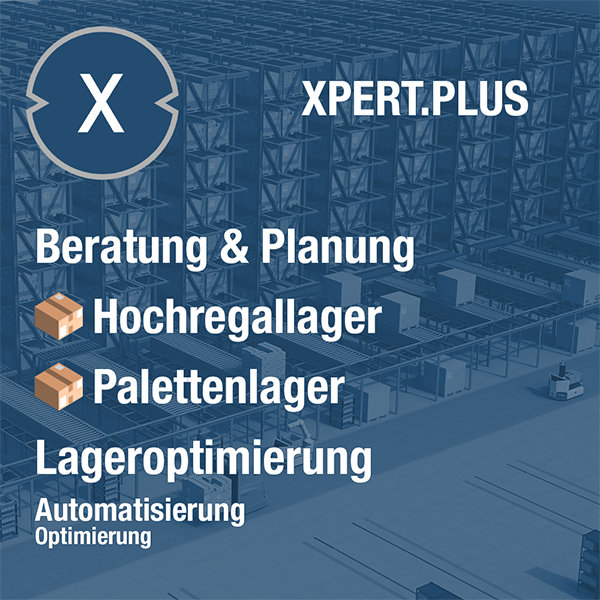
Xpert.Plus warehouse optimization - high-bay warehouses such as pallet warehouses consulting and planning
Xpert.plus-logistics advice and logistics optimization-industry expert, here with its own 'Xpert.digital Industrie-Hub' of over 1,000 specialist contributions
Xpert.Plus is a project from Xpert.Digital. We have many years of experience in supporting and advising on storage solutions and in warehouse optimization, which we bundle in a large network under Xpert.Plus.
I would be happy to serve as your personal advisor.
You can contact me by filling out the contact form below or simply call me on +49 89 89 674 804 (Munich) .
I'm looking forward to our joint project.
Xpert.Digital – Konrad Wolfenstein
Xpert.Digital is a hub for industry with a focus on digitalization, mechanical engineering, logistics/intralogistics and photovoltaics.
With our 360° business development solution, we support well-known companies from new business to after sales.
Market intelligence, smarketing, marketing automation, content development, PR, mail campaigns, personalized social media and lead nurturing are part of our digital tools.
You can find out more at: www.xpert.digital – www.xpert.solar – www.xpert.plus



